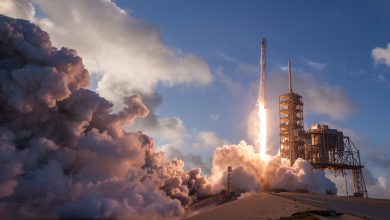AllAllAllAsia and OceaniaEuropeOngoingOngoingOngoingThe Americas
Nuclear Proliferation in the US and Abroad Post WWII
The process by which those first atomic bombs were built was lengthy; many years of research at top secret government facilities had been poured into their design and construction.
In August 1945, the world witnessed the power of a new age of weaponry as two bombs destroyed the Japanese cities of Hiroshima and Nagasaki. The sort of destruction that had before taken entire air wings bombing night after night could now be accomplished with a single bomb. The world had entered the atomic age.
More precisely, the United States had entered the atomic age, and much of the rest of the world was eager to catch up. The resulting arms race began on those warm days in August and continued for decades afterwards, in some places to this very day.
Nuclear Proliferation in the US
The process by which those first atomic bombs were built was lengthy; many years of research at top secret government facilities had been poured into their design and construction. Towns like Los Alamos, New Mexico and Oak Ridge, Tennessee were built to provide secretive spots for this work. After testing was completed, the United States only had two operational bombs by the time they were dropped; had Japan not surrendered after Nagasaki, the world would have to wait for more to be built.
The United States was eager to never be caught in that position again. Recognizing its status as a new superpower, and seeing the ferocity of the Soviet advance through Germany, the United States began constructing more of the weapons. The bomb would help to fulfill America’s promise to keep the world safe for democracy.
It was not just bombs being built, either. Atomic fever swept the military. Missiles were constructed that would allow a nuclear device to be sent half a world away in minutes. Some of these were built to be launched from submarines. Even the Army got in on the act, testing a “Davy Crockett” atomic rocket launcher. These bombs grew more and more powerful. Soon hydrogen bombs were built that dwarfed the atomic payload dropped on Hiroshima and Nagasaki.
Nuclear Proliferation in Other Countries
The rest of the world could not just stand by and watch. The Soviet Union desperately wanted its own nuclear weapons and tested its first weapon in 1949. The Russians were soon building bigger and more destructive bombs, including the most powerful device ever devised, the Tsar Bomba. In the United States, fear about the speed with which the USSR had developed such weapons contributed to moments of extreme hysteria about who could be a “Red” Communist spy.
The other great powers did not sit around, either. The United Kingdom tested its first weapon in 1952, drawing on its collaboration with the United States during the Manhattan Project as well as a number of captured German scientists. The French followed with their own in 1960, and the People’s Republic of China built its first atomic weapon in 1964.
It was not only the so-called great powers that developed nuclear weapons. India’s first atomic weapon was built in 1974 as a deterrent to its rival Pakistan. About the same time, Israel and South Africa allegedly began to work together on a weapon. The Israelis may have deployed basic weapons as early as 1966, but still refuse to admit whether or not they exist. Meanwhile, the South Africans readily admit that they had nuclear weapons, but have since given them up after the end of apartheid. In the late 1990s, Pakistan would perfect its design, finally catching up to India’s threat.
Nuclear Proliferation Today
Nuclear proliferation remains a threat today, as is evidenced by the headlines. Continuing tensions with Iran and North Korea revolve in no small part around their nuclear ambitions. North Korea is rumored to already have a number of weapons, while intelligence reports indicate that Iran has an on-again, off-again program to build them as well. These threats are ignoring the possibility of a nuclear weapon, or even a nuclear isotope, falling into the wrong hands.



